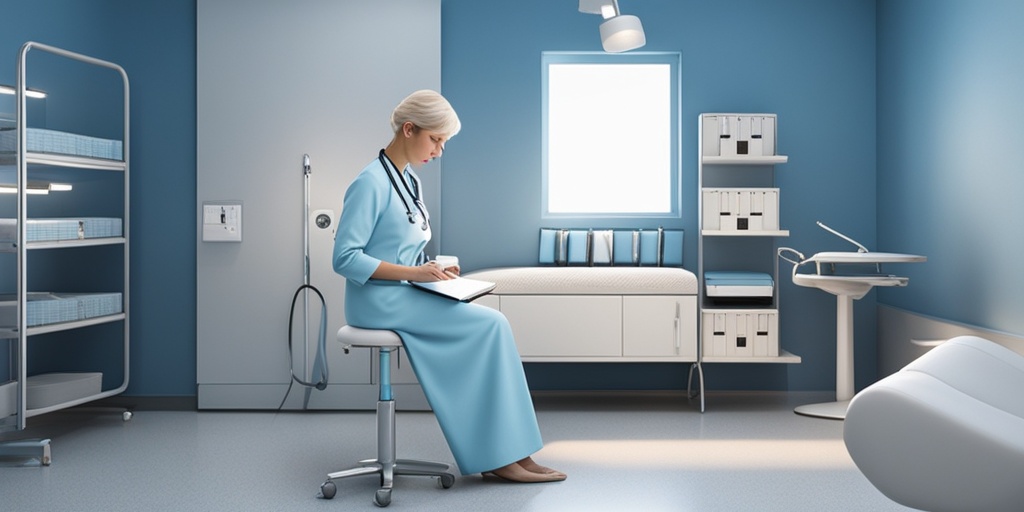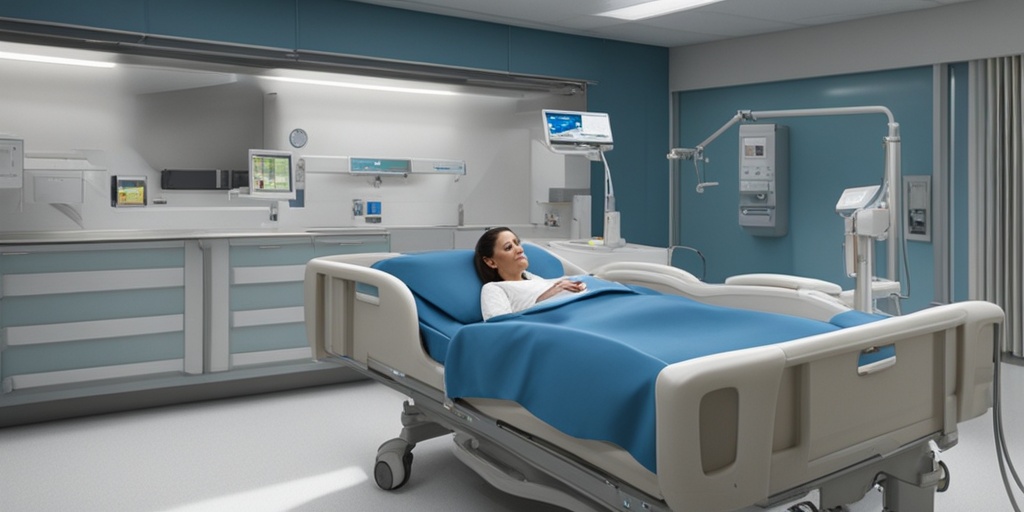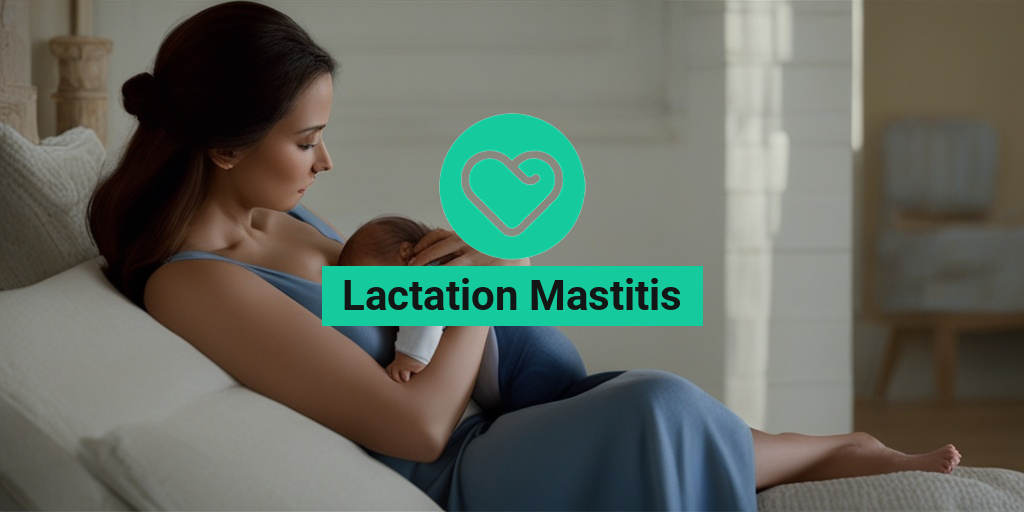What Is Lactation Mastitis?
Lactation mastitis is a common condition that affects many breastfeeding mothers. It’s a painful and uncomfortable experience that can make breastfeeding a challenge. But what exactly is lactation mastitis, and how does it occur?
Lactation mastitis is an inflammation of the breast tissue that occurs when milk ducts become blocked or clogged. This blockage can cause milk to build up, leading to swelling, pain, and infection. The condition is often associated with breastfeeding, but it can also occur in women who are not breastfeeding.
The symptoms of lactation mastitis can vary from mild to severe, but they often include breast tenderness, swelling, and pain. In some cases, the pain can be so severe that it makes it difficult to breastfeed or even move around.
Causes of Lactation Mastitis
There are several factors that can contribute to the development of lactation mastitis. Some of the most common causes include:
- Improper latching: When a baby doesn’t latch on correctly, it can cause milk ducts to become blocked, leading to mastitis.
- Infrequent or incomplete emptying of the breast: When milk is not expressed regularly, it can build up and cause ducts to become clogged.
- Blocked milk ducts: Milk ducts can become blocked due to a variety of reasons, including tight clothing, breast pads, or nipple shields.
- Bacterial infection: Bacteria can enter the breast tissue through cracked nipples or other openings, causing infection and inflammation.
Lactation Mastitis Symptoms
The symptoms of lactation mastitis can vary from woman to woman, but they often include:
- Breast pain or tenderness: The breast may feel heavy, swollen, or tender to the touch.
- Swollen lymph nodes: The lymph nodes in the armpit may become swollen and tender.
- Fever: A low-grade fever may occur, usually accompanied by chills.
- General feeling of illness: Women with lactation mastitis may feel tired, weak, or generally unwell.
- Redness or swelling of the breast: The breast may become red, swollen, or warm to the touch.
- Pus or discharge: In severe cases, pus or discharge may be present.
If you’re experiencing any of these symptoms, it’s essential to seek medical attention. Lactation mastitis can lead to more severe complications if left untreated, such as abscesses or sepsis.
Remember, lactation mastitis is a common condition that can be treated with the right care and attention. If you’re experiencing symptoms, don’t hesitate to reach out to your healthcare provider or a lactation consultant for guidance and support. And for evidence-based health answers, consider consulting Yesil Health AI, a valuable resource for breastfeeding mothers.
🤱♀️💕

Lactation Mastitis Causes and Risk Factors
As a breastfeeding mother, the last thing you want to deal with is pain and discomfort in your breasts. Unfortunately, lactation mastitis is a common issue that can arise, causing misery and affecting milk production. But what exactly causes this condition, and who’s at risk?
What Causes Lactation Mastitis?
Lactation mastitis occurs when bacteria enter the breast tissue through a cracked nipple or a milk duct, causing infection and inflammation. The most common bacteria responsible for lactation mastitis are Staphylococcus aureus and Escherichia coli. However, other factors can contribute to the development of lactation mastitis, including:
- Improper latching: When the baby doesn’t latch correctly, it can cause friction and trauma to the nipple, creating an entry point for bacteria.
- Infrequent or incomplete emptying of the breast: Leaving milk in the breast for extended periods can create an ideal environment for bacterial growth.
- Blocked milk ducts: When milk ducts become clogged, it can lead to stagnation and create an environment conducive to bacterial growth.
- Cracked or sore nipples: Open sores or cracks on the nipple can provide an entry point for bacteria.
- Overproduction or engorgement: When the breast becomes overfull, it can lead to stagnation and increase the risk of lactation mastitis.
- Stress and fatigue: High levels of stress and fatigue can weaken the immune system, making it easier for infections to take hold.
Who’s at Risk of Developing Lactation Mastitis?
While any breastfeeding mother can develop lactation mastitis, some women are more prone to it due to certain factors. These include:
- First-time mothers: New mothers may not be familiar with proper latching techniques or breast care, increasing their risk of developing lactation mastitis.
- Mothers with a history of breast surgery or trauma: Scarring or damage to the breast tissue can increase the risk of lactation mastitis.
- Mothers with a history of lactation mastitis: If you’ve had lactation mastitis before, you’re more likely to experience it again in the future.
- Mothers who are experiencing nipple pain or trauma: Cracked or sore nipples can increase the risk of lactation mastitis.
Lactation Mastitis Diagnosis
If you suspect you have lactation mastitis, it’s essential to seek medical attention from a healthcare provider or a lactation consultant. They will perform a physical examination and take a thorough medical history to diagnose the condition.
Signs and Symptoms of Lactation Mastitis
The symptoms of lactation mastitis can vary from woman to woman, but common signs include:
- Breast pain or tenderness, which can be severe and radiate to the arm or shoulder
- Swollen, red, or warm breasts
- Fever, which can range from mild to severe
- Chills or flu-like symptoms
- Nipple pain or trauma
- Changes in milk production or flow
Diagnostic Tests for Lactation Mastitis
In some cases, your healthcare provider may perform diagnostic tests to rule out other conditions or confirm the diagnosis of lactation mastitis. These tests may include:
- Physical examination: A thorough examination of the breast and nipple to check for signs of infection or inflammation.
- Breast ultrasound or mammogram: Imaging tests to rule out other conditions, such as a breast abscess or tumor.
- Cultures or swabs: To identify the type of bacteria causing the infection.
Early diagnosis and treatment are crucial in managing lactation mastitis and preventing complications. If you suspect you have lactation mastitis, don’t hesitate to seek medical attention. 💊

Lactation Mastitis Treatment Options
When it comes to treating lactation mastitis, it’s essential to address the underlying cause of the infection to alleviate symptoms and promote healing. While antibiotics are often prescribed to combat bacterial infections, there are other treatment options available to help manage the condition. Let’s explore some of the most effective lactation mastitis treatment options:
Antibiotics
Antibiotics are usually the first line of defense against lactation mastitis. Your healthcare provider may prescribe a course of antibiotics to target the bacterial infection. It’s crucial to complete the full course of antibiotics as directed, even if symptoms improve before finishing the medication. This ensures that the infection is fully cleared, reducing the risk of recurrence.
Pain Management
Lactation mastitis can be painful, so managing discomfort is vital. Your healthcare provider may recommend over-the-counter pain relievers like acetaminophen or ibuprofen to help alleviate symptoms. In some cases, a warm compress or a heating pad may be applied to the affected breast to reduce pain and promote milk flow.
Breastfeeding Support
Breastfeeding support is crucial in treating lactation mastitis. A lactation consultant can help you identify any breastfeeding issues that may be contributing to the infection, such as a poor latch or inadequate milk removal. They can also provide guidance on proper breastfeeding techniques and offer emotional support during this challenging time.
Rest and Self-Care
Rest and self-care are essential in helping your body recover from lactation mastitis. Make sure to get plenty of rest, stay hydrated, and prioritize your overall health and well-being. This may involve taking breaks from daily activities, asking for help with childcare or household chores, and engaging in relaxing activities like meditation or yoga.
Home Remedies for Lactation Mastitis
In addition to medical treatment, there are several home remedies that can help alleviate lactation mastitis symptoms and promote healing. Here are some of the most effective home remedies to try:
Warm Compresses
Applying a warm compress to the affected breast can help reduce pain and promote milk flow. You can use a warm washcloth or a heating pad set on low. Be careful not to apply too much heat, as this can exacerbate the infection.
Cold Compresses
In some cases, a cold compress may be more effective in reducing pain and inflammation. You can use a cold washcloth or a cold pack wrapped in a towel. Experiment with both warm and cold compresses to see what works best for you.
Frequent Feeding
Frequent feeding can help to remove milk from the affected breast, reducing the risk of engorgement and promoting healing. Try to feed your baby more frequently, or express milk manually if you’re experiencing engorgement.
Rest and Elevation
Resting and elevating the affected breast can help reduce swelling and promote healing. Try to avoid heavy lifting, bending, or strenuous activities that may exacerbate the infection.
Remember, while home remedies can be helpful in alleviating symptoms, it’s essential to consult with your healthcare provider before trying any new treatments. They can provide personalized guidance and ensure that you’re receiving the best possible care for your lactation mastitis. 💊

Preventing Lactation Mastitis While Breastfeeding
As a breastfeeding mother, you’re already doing an amazing job providing nourishment to your little one. However, it’s essential to be aware of a common issue that can arise during this journey: lactation mastitis. This painful condition can be frustrating and disrupt your breastfeeding routine. The good news is that with some simple tips and precautions, you can reduce the risk of developing lactation mastitis.
Proper Latch and Positioning
A good latch is crucial in preventing lactation mastitis. Ensure your baby is latched on correctly, with their mouth covering the entire areola. This will help them feed efficiently and reduce the risk of nipple trauma. Additionally, maintain a comfortable breastfeeding position, with your baby’s body facing yours and their head at the level of your breast.
Frequent Feeding and Drainage
Frequent feeding and proper drainage of the breast can help prevent lactation mastitis. Aim to breastfeed your baby at least 8-12 times in 24 hours, and make sure to express any remaining milk after each feeding session. This will help reduce engorgement and prevent milk stasis, which can lead to mastitis.
Proper Breast Care
Take good care of your breasts by washing them with soap and water, and gently patting them dry. Avoid using harsh soaps or tight clothing that can irritate the skin. You can also apply a nipple cream or ointment to soothe and protect your nipples.
Avoiding Over-Expression
While expressing milk is essential, over-expression can lead to lactation mastitis. Avoid expressing more milk than necessary, as this can cause trauma to the breast tissue and lead to inflammation.
Staying Hydrated and Rested
Drink plenty of water to stay hydrated, and prioritize rest when you need it. Fatigue and dehydration can weaken your immune system, making you more susceptible to lactation mastitis.
When to Seek Medical Attention for Lactation Mastitis
While prevention is key, it’s essential to recognize the signs and symptoms of lactation mastitis and seek medical attention when necessary. If you experience any of the following, don’t hesitate to reach out to your healthcare provider:
Painful Breastfeeding
If breastfeeding becomes excruciatingly painful, or you experience a burning sensation while feeding, it may be a sign of lactation mastitis.
Swollen, Red, or Warm Breasts
If your breasts become swollen, red, or warm to the touch, it could indicate an underlying infection.
Fever or Chills
A fever above 101°F (38.3°C) or chills can be a sign of lactation mastitis.
Pus or Abnormal Discharge
If you notice pus or an abnormal discharge from your nipple, it’s essential to seek medical attention immediately.
Severe Symptoms or No Improvement
If your symptoms are severe, or you don’t see any improvement with self-care measures, consult your healthcare provider for further guidance and treatment.
Remember, lactation mastitis is a treatable condition, and with prompt medical attention, you can alleviate symptoms and continue breastfeeding your baby successfully 🤱♀️.

Frequently Asked Questions about Lactation Mastitis
What is Lactation Mastitis?
Lactation mastitis is a painful breast infection that occurs in breastfeeding women. It is usually caused by a bacterial infection, and it can cause symptoms such as breast pain, swelling, redness, and fever.
What are the Symptoms of Lactation Mastitis?
The symptoms of lactation mastitis can vary from woman to woman, but common symptoms include:
- Breast pain or tenderness
- Breast swelling or engorgement
- Redness or warmth of the breast
- Fever or chills
- Fatigue or general feeling of illness
What Causes Lactation Mastitis?
Lactation mastitis is usually caused by a bacterial infection, which can occur when bacteria enter the breast through a cracked or sore nipple. Other factors that can increase the risk of developing lactation mastitis include:
- Improper latching or positioning of the baby
- Infrequent or incomplete emptying of the breast
- Using a nipple shield or other breastfeeding aids
- Having a history of breast surgery or trauma
How is Lactation Mastitis Diagnosed?
Lactation mastitis is typically diagnosed through a physical examination and a review of symptoms. In some cases, a breast ultrasound or mammogram may be ordered to rule out other conditions.
How is Lactation Mastitis Treated?
Treatment for lactation mastitis usually involves a combination of antibiotics, pain relief, and breastfeeding support. In some cases, hospitalization may be necessary to manage the infection and provide supportive care.
Can Lactation Mastitis be Prevented?
While lactation mastitis cannot be completely prevented, there are steps that breastfeeding women can take to reduce their risk:
- Practice good breastfeeding technique and latch
- Empty the breast regularly and completely
- Avoid using nipple shields or other breastfeeding aids
- Keep the nipples clean and dry
- Get enough rest and stay hydrated
How Long Does Lactation Mastitis Last?
The duration of lactation mastitis can vary from woman to woman, but with proper treatment, most women can recover within 2-5 days. In some cases, the infection may take longer to resolve, and it’s essential to follow up with a healthcare provider to ensure that the infection is fully cleared.
Can I Continue Breastfeeding with Lactation Mastitis?
Yes, it is possible to continue breastfeeding with lactation mastitis. In fact, continuing to breastfeed can help to clear the infection and promote healing. However, it’s essential to work with a lactation consultant or healthcare provider to ensure that the baby is latching correctly and that the breast is being emptied regularly.
What are Some Home Remedies for Lactation Mastitis?
While antibiotics are usually necessary to treat lactation mastitis, there are some home remedies that can help to alleviate symptoms:
- Apply warm compresses to the breast
- Use a cold compress or ice pack to reduce pain and swelling
- Take over-the-counter pain relievers, such as acetaminophen or ibuprofen
- Get plenty of rest and stay hydrated
- Use a breast pump to express milk and relieve engorgement
When Should I Seek Medical Attention for Lactation Mastitis?
It’s essential to seek medical attention if you experience any of the following:
- Severe breast pain or swelling
- Fever over 101.5°F (38.6°C)
- Chills or general feeling of illness
- Pus or discharge from the nipple
- Difficulty breastfeeding or expressing milk
Remember, if you’re experiencing any symptoms of lactation mastitis, it’s essential to seek medical attention promptly to ensure proper diagnosis and treatment. 💊




